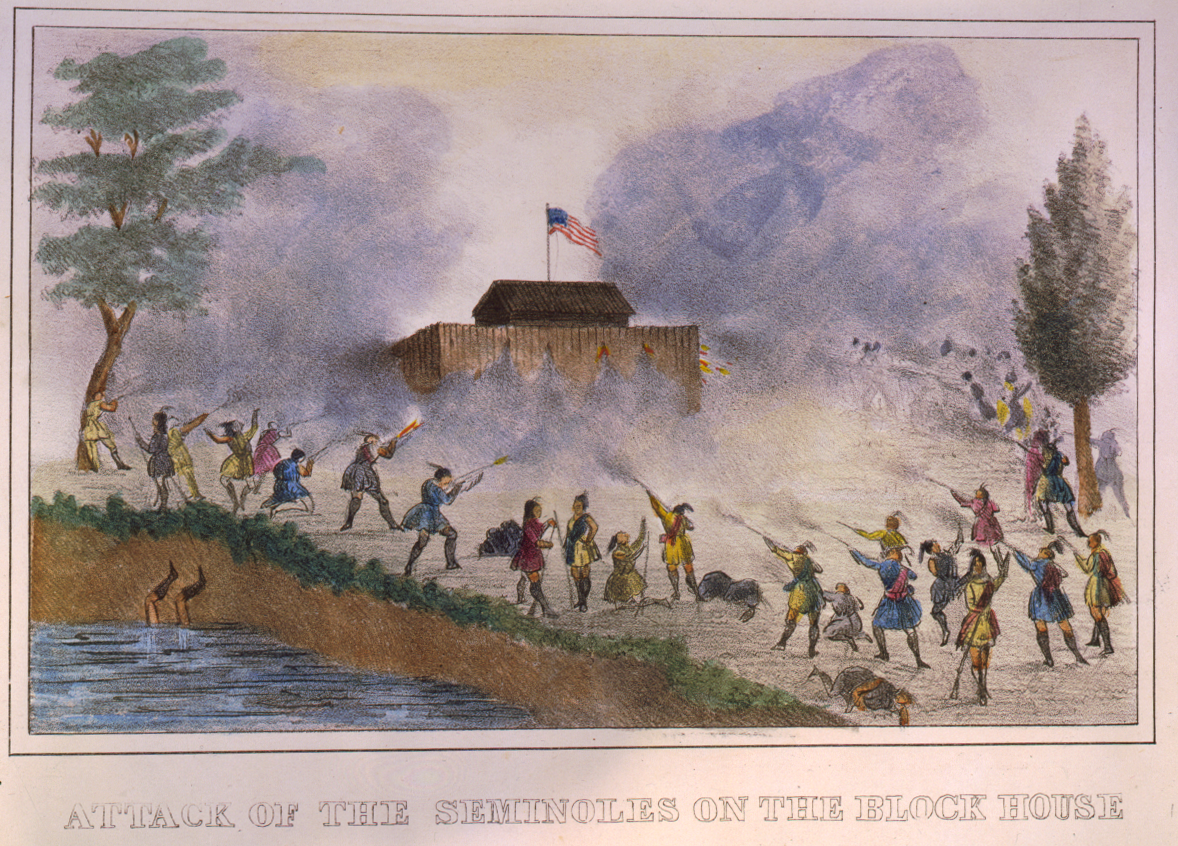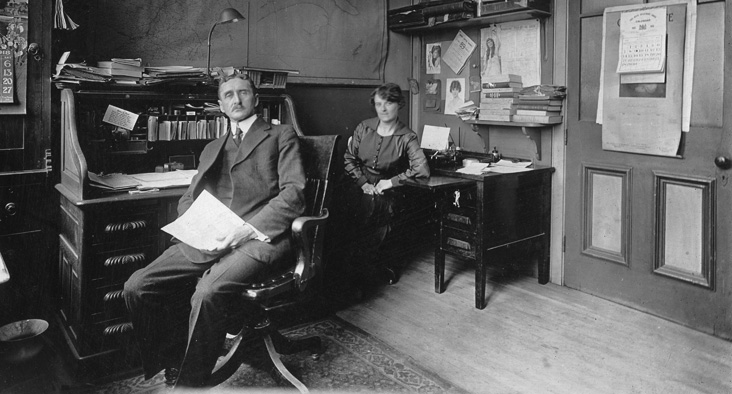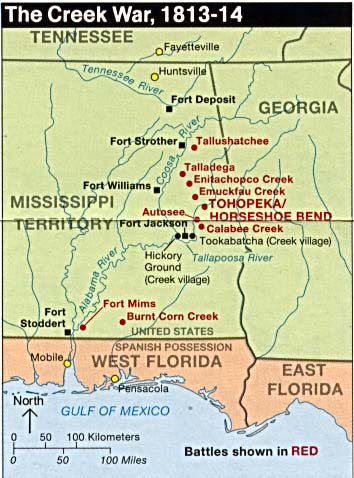|
Robert Armstrong (1792–1854)
Robert Armstrong (September 28, 1792 – February 23, 1854) was an officer in the United States Army, a candidate for the position of Governor of Tennessee, and a United States consul to Liverpool. Early life He was born in Abingdon, Virginia, in 1792.Marquis Who's Who, Inc. ''Who Was Who in American History, the Military''. Chicago: Marquis Who's Who, 1975. P. 15 Career He served as a sergeant in the Army during the War of 1812, and as a lieutenant of artillery under Andrew Jackson during the Creek War, getting wounded at the Battle of Enitachopco Creek in 1814, and served as a member of Jackson's staff at the Battle of New Orleans in 1815. In 1829, he was named the postmaster of Nashville, Tennessee, and remained in that position through 1835. He was commissioned a brigadier general during the Second Seminole War during 1836 and 1837, and was engaged in the Battle of Wahoo Swamp The Battle of Wahoo Swamp was an extended military engagement of the Second Seminole Wa ... [...More Info...] [...Related Items...] OR: [Wikipedia] [Google] [Baidu] |
George Dury
Friedrich Julius Georg Dury (1817–1894) was a well-regarded Bavarian-American portrait artist who worked in both oil and pastel. He was born and educated in Würzburg, Germany, Würzburg, Kingdom of Bavaria, Bavaria, and Munich, where he began his career as an artist. In 1849, after the Revolutions of 1848, Dury emigrated to the United States with his sister and their respective spouses, whom they had married shortly before departure. He became a bespoke gallery artist in Nashville, Tennessee. He and his family struggled during the American Civil War because Nashville was occupied by Union troops for three years. Soldiers or officers were often billeted with townspeople, and some took the families' food. After the war, the Tennessee state legislature commissioned several portraits from Dury, including of the late President Abraham Lincoln (assassinated in 1865) and his successor Andrew Johnson, the former vice- president. An 1870 review in a Nashville newspaper said Dury was an ... [...More Info...] [...Related Items...] OR: [Wikipedia] [Google] [Baidu] |
Battle Of New Orleans
The Battle of New Orleans was fought on January 8, 1815, between the British Army under Major General Sir Edward Pakenham and the United States Army under Brevet Major General Andrew Jackson, roughly 5 miles (8 km) southeast of the French Quarter of New Orleans, in the current suburb of Chalmette, Louisiana. The battle was the climax of the five-month War of 1812#Gulf of Mexico Coast, Gulf Campaign (September 1814 to February 1815) by Britain to try to take New Orleans, West Florida, and possibly Louisiana Territory which began at the Fort Bowyer#First battle, First Battle of Fort Bowyer. Britain started the New Orleans campaign on December 14, 1814, at the Battle of Lake Borgne and numerous skirmishes and artillery duels happened in the weeks leading up to the final battle. The battle took place 15 days after the signing of the Treaty of Ghent, which formally ended the War of 1812, on December 24, 1814, though it would not be ratified by the United States (and therefor ... [...More Info...] [...Related Items...] OR: [Wikipedia] [Google] [Baidu] |
Politicians From Washington, D
A politician is a person who participates in policy-making processes, usually holding an elective position in government. Politicians represent the people, make decisions, and influence the formulation of public policy. The roles or duties that politicians must perform vary depending on the level of government they serve, whether local, national, or international. The ideological orientation that politicians adopt often stems from their previous experience, education, beliefs, the political parties they belong to, or public opinion. Politicians sometimes face many challenges and mistakes that may affect their credibility and ability to persuade. These mistakes include political corruption resulting from their misuse and exploitation of power to achieve their interests, which requires them to prioritize the public interest and develop long-term strategies. Challenges include how to keep up with the development of social media and confronting biased media, in addition to discrimi ... [...More Info...] [...Related Items...] OR: [Wikipedia] [Google] [Baidu] |
1854 Deaths
Events January–March * January 4 – The McDonald Islands are discovered by Captain William McDonald aboard the ''Samarang''. * January 6 – The fictional detective Sherlock Holmes is perhaps born. * January 9 – The Teutonia Männerchor in Pittsburgh is founded to promote German culture. * January 20 – The North Carolina General Assembly in the United States charters the Atlantic and North Carolina Railroad, to run from Goldsboro through New Bern, to the newly created seaport of Morehead City, near Beaufort. * January 21 – The iron clipper runs aground off the east coast of Ireland, on her maiden voyage out of Liverpool, bound for Australia, with the loss of at least 300 out of 650 on board. * February 11 – Major streets are lit by coal gas for the first time by the San Francisco Gas Company; 86 such lamps are turned on this evening in San Francisco, California. * February 13 – Mexican troops force William Walker and his tro ... [...More Info...] [...Related Items...] OR: [Wikipedia] [Google] [Baidu] |
1792 Births
Events January–March * January 9 – The Treaty of Jassy ends the Russian Empire's war with the Ottoman Empire over Crimea. * January 25 – The London Corresponding Society is founded. * February 18 – Thomas Holcroft produces the comedy ''The Road to Ruin (play), The Road to Ruin'' in London. * February 20 ** The Postal Service Act, establishing the United States Postal Service, United States Post Office Department, is signed by President George Washington.''Harper's Encyclopaedia of United States History from 458 A. D. to 1909'', ed. by Benson John Lossing and, Woodrow Wilson (Harper & Brothers, 1910) p169 ** Parliament House, Dublin catches fire during a legislative session. "Although in imminent danger of the roof falling in," it is noted later, "the House did not adjourn until a proper motion had been put and carried in the affirmative.""Fires, Great", in ''The Insurance Cyclopeadia: Being an Historical Treasury of Events and Circumstances Connect ... [...More Info...] [...Related Items...] OR: [Wikipedia] [Google] [Baidu] |
Battle Of Wahoo Swamp
The Battle of Wahoo Swamp was an extended military engagement of the Second Seminole War fought in November 1836 in the Wahoo Swamp, approximately 50 miles northeast of Fort Brooke in Tampa and 35 miles south of Fort King in Ocala in modern Sumter County, Florida. General Richard K. Call, the territorial governor of Florida, led a mixed force consisting of Florida militia, Tennessee volunteers, Creek mercenaries, and some troops of the US Army and Marines against Seminole forces led by chiefs Osuchee and Yaholooche. Soon after hostilities began in late 1835, a portion of the Seminole and Black Seminole of north and central Florida removed to the Wahoo Swamp – a largely unmapped wilderness of wetlands, dense hardwood hammocks, and scattered wet prairies – as a refuge from attempts to expel them from the territory as demanded by the Indian Removal Act. Settlements were established on patches of dry land along the Withlacoochee River, and the area became a base from whic ... [...More Info...] [...Related Items...] OR: [Wikipedia] [Google] [Baidu] |
Second Seminole War
The Second Seminole War, also known as the Florida War, was a conflict from 1835 to 1842 in Florida between the United States and groups of people collectively known as Seminoles, consisting of Muscogee, Creek and Black Seminoles as well as other allied tribes (see below). It was part of a series of conflicts called the Seminole Wars. The Second Seminole War, often referred to as ''the'' Seminole War, is regarded as "the longest and most costly of the American Indian Wars, Indian conflicts of the United States". After the Treaty of Payne's Landing in 1832 that called for the Seminoles' removal from Florida, tensions rose until fierce hostilities occurred in Dade battle, Dade's massacre in 1835. This engagement officially started the war although there were a series of incidents leading up to the Dade battle. The Seminoles and the U.S. forces engaged in mostly small engagements for more than six years. By 1842, only a few hundred native peoples remained in Florida. Although no pea ... [...More Info...] [...Related Items...] OR: [Wikipedia] [Google] [Baidu] |
Nashville, Tennessee
Nashville, often known as Music City, is the capital and List of municipalities in Tennessee, most populous city in the U.S. state of Tennessee. It is the county seat, seat of Davidson County, Tennessee, Davidson County in Middle Tennessee, located on the Cumberland River. Nashville had a population of 689,447 at the 2020 United States census, 2020 census, making it the List of United States cities by population, 21st-most populous city in the United States and the fourth-most populous city in Southeastern United States, the Southeast. The city is the center of the Nashville metropolitan area, home to 2.1 million people, and is among the fastest growing cities in the nation. Named for Francis Nash, a general of the Continental Army during the American Revolutionary War, the city was founded in 1779 when this territory was still considered part of North Carolina. The city grew quickly due to its strategic location as a port on the Cumberland River and, in the 19th century, a railr ... [...More Info...] [...Related Items...] OR: [Wikipedia] [Google] [Baidu] |
Postmaster
A postmaster is the head of an individual post office, responsible for all postal activities in a specific post office. When a postmaster is responsible for an entire mail distribution organization (usually sponsored by a national government), the title of Postmaster General is commonly used. Responsibilities of a postmaster typically include management of a centralized mail distribution facility, establishment of letter carrier routes, supervision of letter carriers and clerks, and enforcement of the organization's rules and procedures. The postmaster is the representative of the Postmaster General in that post office. In Canada, many early places are named after the first postmaster. History In the days of horse-drawn carriages, a postmaster was an individual from whom horses and/or riders (known as postilions or "post-boys") could be hired. The postmaster would reside in a "post house". The first Postmaster General of the United States was the notable founding father ... [...More Info...] [...Related Items...] OR: [Wikipedia] [Google] [Baidu] |
Creek War
The Creek War (also the Red Stick War or the Creek Civil War) was a regional conflict between opposing Native American factions, European powers, and the United States during the early 19th century. The Creek War began as a conflict within the tribes of the Muscogee, but the United States quickly became involved. British traders and Spanish colonial officials in Florida supplied the Red Sticks with weapons and equipment due to their shared interest in preventing the expansion of the United States into regions under their control. The Creek War took place largely in modern-day Alabama and along the Gulf Coast. Major engagements of the war involved the United States military and the Red Sticks (or Upper Creeks), a Muscogee tribal faction who resisted U.S. territorial expansion. The United States formed an alliance with the traditional enemies of the Muscogee, the Choctaw and Cherokee nations, as well as the Lower Creeks faction of the Muscogee. During the hostilities, the Red ... [...More Info...] [...Related Items...] OR: [Wikipedia] [Google] [Baidu] |








